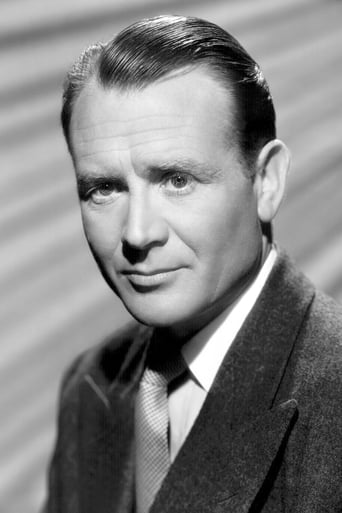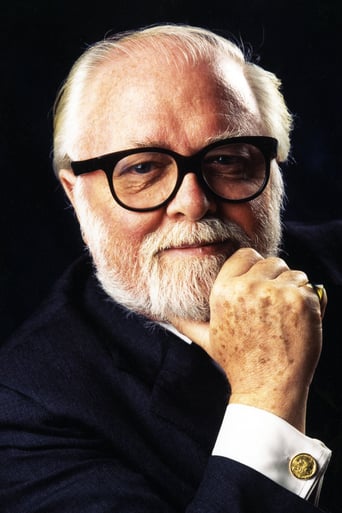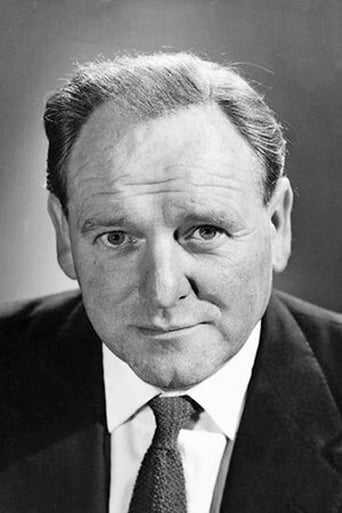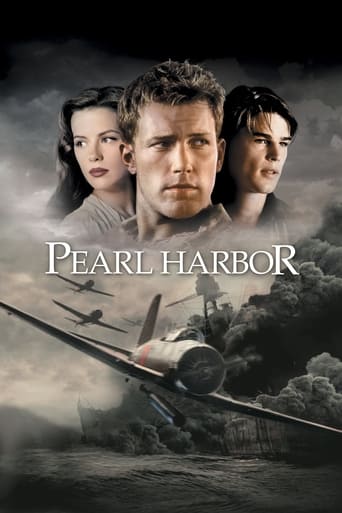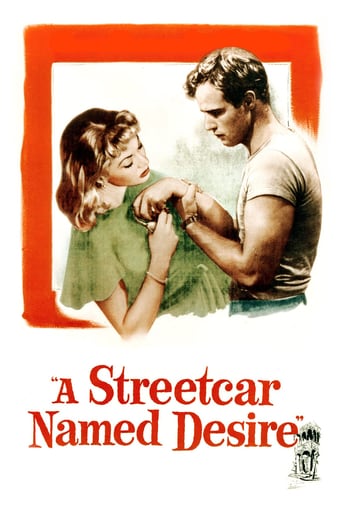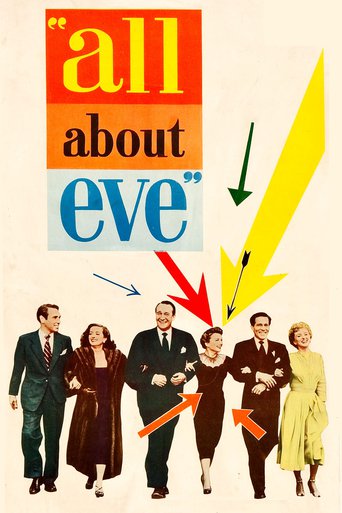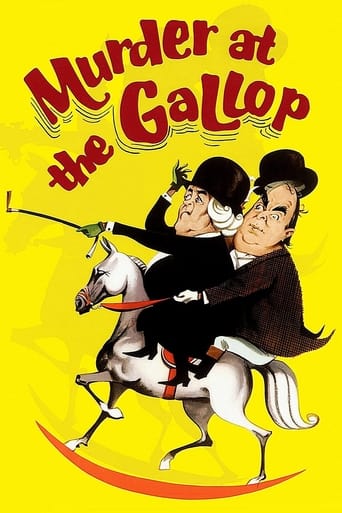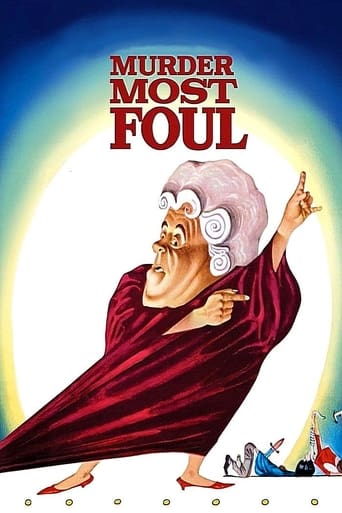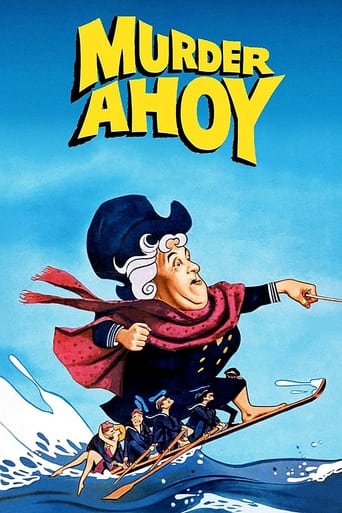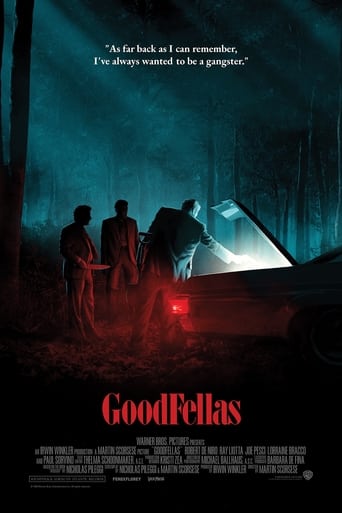Dunkirk (1958)
A British Corporal in France finds himself responsible for the lives of his men when their officer is killed. He has to get them back to Britain somehow. Meanwhile, British civilians are being dragged into the war with Operation Dynamo, the scheme to get the French and British forces back from the Dunkirk beaches. Some come forward to help, others were less willing.
Watch Trailer
Cast


Similar titles
Reviews
Fresh and Exciting
A brilliant film that helped define a genre
Fun premise, good actors, bad writing. This film seemed to have potential at the beginning but it quickly devolves into a trite action film. Ultimately it's very boring.
Fanciful, disturbing, and wildly original, it announces the arrival of a fresh, bold voice in American cinema.
It's interesting to compare this film with other versions of the trauma at Dunkirk, like "Mrs Miniver" (1942), "Atonement" (2007) and Christopher Nolan's version of 2017. They all four tell the same story but from very different aspects. In "Mrs Miniver" there is a family drawn into the war and contributing in the Dunkirk drama at the height of the film, "Atonement" is a very personal story with a long fantastic sequence at the centre of the film comprising the whole Dunkirk situation, while Christopher Nolan's film concentrates entirely on action and crisis realism. This one tells the story of some soldiers at a loss being driven across Belgium to the shores and some boat owners at home who eventually are stranded at Dunkirk, one unwillingly (Richard Attenborough), who describes a thorough character development and change during the course of the film. We don't reach Dunkirk until after 3/4 of the film, but then the great finale on the shores is the more epic and overwhelming. Christopher Nolan's film goes even further and succeeds in giving the drama an even closer look and deeper realism, while this film is perhaps a little more romantic, wíth heroically cheerful music to accompany the fleet. "Dunkirk" of 2017 is definitely the best screened version of the drama, "Atonement" was an even better film than the "Dunkirk" of 1958, while "Mrs Miniver" takes the price as a female version. They are all four praiseworthy to the maximum, there are no flaws in any of them, they all compliment each other, they are all equally memorable and worth watching again.
Ho ho! I see we're all at it, having seen Nolan's version of events but, coincidentally (I'm sure) More 4 Channel screened the earlier version of Dunkirk last weekend. Although I'd seen it before, I just had to compare the two films; just like everyone else! Anything war, with John Mills, is a must-see for a start. I've never seen him give a bad performance, whether he's playing a middle-class character, or his familiar chirpy cockney type as here. The action, though familiar, was well executed, featuring rearguard disruption of the German advance but not shying away from the brutal realities e.g. when the refugee column is machine-gunned from the air. The expletives uttered by the soldiers, though tame by today's standards, appear quite strong for the time, as well as occasionally humorous. "Don't mind him, he's just a moaning bleeder!" British viewers will be amused early on in the film when Flanagan and Allen are featured singing "Hang out our washing on the Siegfried Line" accompanied by an on-screen animated map showing the German advance and the British retreat across France. This idea was later copied for the title sequence for the TV comedy "Dad's Army" which also featured Bud Flanagan singing. The beach sequences are very similar to those in the newer film including the action on The Mole with recently loaded ships being immediately sunk and soldiers remarking on the number of times they've had to go back. However, the beach and dunes seem more crowded and chaotic during the air attacks which, this being a black and white film, tend to feature footage of real aircraft. The common view of the missing RAF was also emphasised when ground crew airman Michael Bate is harangued on the beach by angry soldiers and advised to change his uniform for battle dress. The little boats sequence is particularly well done even if the stoicism of the largely middle-class owners seems a little corny now. Richard Attenborough plays a self-satisfied, slightly cowardly factory owner who eventually sees where his duty lies and adds his craft to the flotilla. Bernard Lee plays a steady middle-aged reporter who is not averse to openly criticising those in charge of the war effort but who is also prepared to do his bit to help out. The big difference between this and the new film is that we get character development and get to know, like, empathise with and dislike them. As with any film of the time there is a host of well-known British character actors in the many roles featured. It's fun playing the "whatsisname game." Well done Leslie Norman, you have it over Chris Nolan.
Traditional armchair generals should know Christopher Nolan's World War II epic "Dunkirk" has little to do with the battle of Dunkirk. You won't see German Panzer Corps careening through Belgium and plowing into France. In fact, the only Germans in "Dunkirk" are either flying aircraft (so cannot see them) or show up as infantry from unknown units. Instead, "Dunkirk" confines itself strictly to the evacuation of the British Expeditionary Forces (B.E.F.) in three segments: one on land covering one week, one on sea covering one day, and one in the air covering one hour. Of course, much, much more occurred at Dunkirk than just the wholesale evacuation. Presumably, the "Dark Knight" filmmaker didn't want to overwhelm himself with an ambitious battle extravaganza. "Dunkirk" was produced for $100-million, and likely millions went to publicity. So, if you're looking for something like "The Longest Day" (1962), "Battle of the Bulge" (1965), "Anzio" (1968), "A Bridge Too Far" (1977), "Saving Private Ryan" (1998), and "Hacksaw Ridge" (2016), prepare to be disappointed. "Dunkirk" doesn't recreate historic battlefield combat, not even the infamous Wormhoudt Massacre. Adolf Hitler's Waffen-SS soldiers slaughtered as many as 80 British soldiers along with some French POWs. The cold-hearted SS crowded these prisoners into a stable, tossed in stick-grenades, and then finished them off with bursts of machine gun fire. Something like this might have given "Dunkirk" greater dramatic gravity. Instead, we see neither German tanks nor troops storming through France and Belgium. This 107-minute movie boils down to a series of survival episodes that occurred at Dunkirk. Notably, the RAF preferred to confine their resources largely to the island in preparation for the inevitable Battle of Britain, later made into the exemplary film "Battle of Britain" (1969). Along with the RAF, the courageous Royal Navy and the Small Boat Owners emerge as the heroes who rescued the BEF waiting anxiously on the beach."Dunkirk" opens with several British infantrymen sauntering down a road inside the Dunkirk city limits as the Luftwaffe showers them with propaganda leaflets. No sooner have they had a moment to glance at these surrender summons than gunfire erupts from an unknown source. As they scramble for cover, unseen shooters kill all them except Tommy (newcomer Fiona Whitehead), who crosses a street and comes under fire then from French troops. They wave him toward their lines, and later he wanders onto the beaches. As far as he can see, queues of troops are standing on the beach awaiting transport. "Spectre" lenser Hoyte Van Hoytema's atmospheric cinematography shows these soldiers in their brown uniforms standing like ducks in neat, orderly rows on white beaches. These scenes resemble something out of "Lawrence of Arabia" in all their sprawling immensity. Van Hoytema's cinematography adds to the spectacle of the event. Not long afterward, as Tommy tours the beach, screaming Stuka dive-bombers plunge from the skies, seeding the beaches with bombs. The worst death in "Dunkirk" occurs when one of these bombs blast a British soldier to smithereens as he shoots vainly at a Stuka. Tommy meets another soldier under mysterious circumstances on the beach. Might he be a German saboteur? Without challenging him about his strange behavior, Tommy pitches in to help him. They become fast friends who desperately break the rules and the lines so they can get aboard a transport. Cheekily, they seize a stretcher case awaiting transport and dash to an embarkation station. They reach the ship at the last minute, but they are sent packing because they weren't Red Cross personnel. Nolan has these two heading off to find passage elsewhere by any means whatever. Their exploits turn into shenanigans as they deal with one setback after another, even after they stow aboard a ship.Although the RAF lost fewer planes than the Luftwaffe: 145 to 156, "Dunkirk" shows no more than six Spitfire fighters cruising the English Channel in search of prey. Again, budgetary concerns may explain the aircraft shortages. Also, Nolan doesn't go for too much CGI, so he resorted to cardboard cutouts of troops on the beach. Nevertheless, we get one hour's worth of the RAF giving the Luftwaffe utter Hell. Predictably, one pilot perishes in a crash, another ditches in the sea, but the third is far more fortunate. RAF pilot Farrier (Tom Hardy of "Mad Max: Fury Road") riddles repeatedly the Luftwaffe in "Dunkirk's" most exciting scenes. Christopher Nolan does a decent job of staging several tense scenes of soldiers confronting catastrophe. Unfortunately, apart from Tom Hardy's RAF pilot, Kenneth Blangah's Naval officer (rarely endangered), Mark Rylance as an intrepid civilian sailor, and Cillian Murphy as a shell-shocked soldier, celebrity movie stars of prominence are far and few between in this epic. Indeed, most of the actors are unknown, except perhaps for "One-Direction" singer Harry Styles. Suspense works best when a character is conspicuous enough either as an actor or as a character for us to care about. Everybody is virtually a nobody in "Dunkirk." Meantime, evoking sympathy for soldiers so desperate that they take refuge in a beached ship and become targets seems like the province of a horror chiller. Quoting the cliché, they die like fish in a barrel during target practice. Indeed, two of the soldiers trapped in the boat are the same duo who have tried to bluff their way board a Red Cross ship. Oscar winning actor Mark Rylance has one of the better roles as a small boat owner who has already lost a son in the RAF. The episode with the shell-shocked soldier involving the inconsequential treatment of a civilian teen is the least savory scene. Nevertheless, Rylance's character is never in jeopardy. Often wearing an aviator's oxygen mask, Tom Hardy looks like the villainous Bane from Nolan's "The Dark Knight Rises," but he comes closest to being a blood and guts hero. Ultimately, despite its heartfelt tribute to British resiliency in the face of annihilation, "Dunkirk" qualifies as a fair war movie.
Director Leslie Norman's "Dunkirk" tells the story of Operation Dynamo, the evacuation of British and French troops from the beaches of Dunkirk during WW2. Much of the film follows Corporal Tubby Binns (John Mills), an out-of-his-depth platoon leader who finds his unit trapped behind enemy lines. The film's best moments watch as this rag-tag bunch navigate the French countryside, skirmishing with Germans and doing their best to evade superior forces.Another subplot tells a familiar, propagandistic tale of war-time responsibility. Here Richard Attenborough plays a businessmen who casts aside cowardice and complacency in favour for rallying behind Britain's war effort. Running parallel to this is the story of Charles Foreman (Bernard Lee), a journalist who tries to shake up his indifferent readers."Dunkirk" ends with a massive set piece which won't impress modern viewers. Still, this is an interesting, idiosyncratic war film, and one which offers some fine views of rural, post-war Britain.7.5/10 – See "The Big Lift". Worth one viewing.






